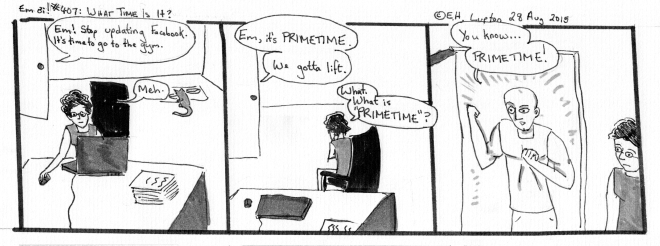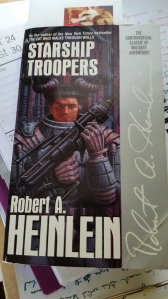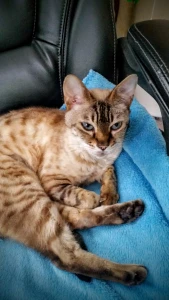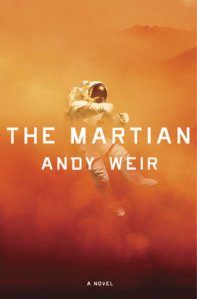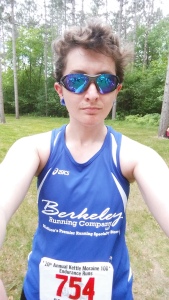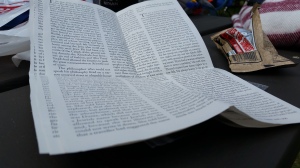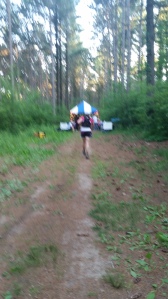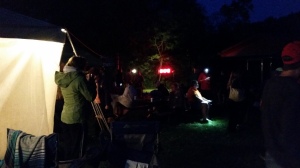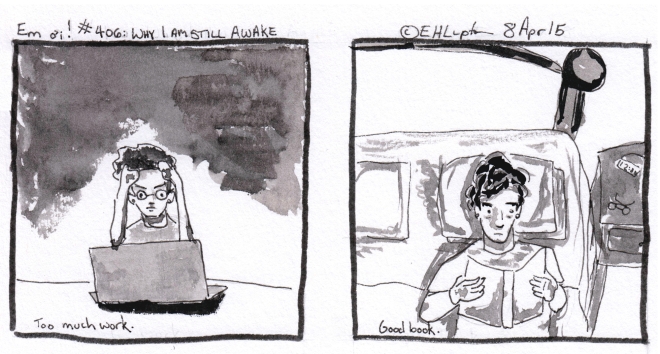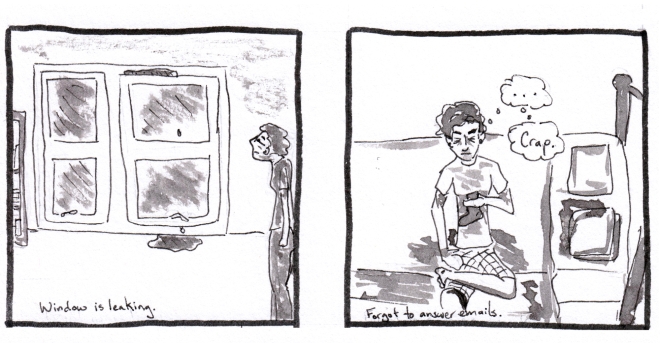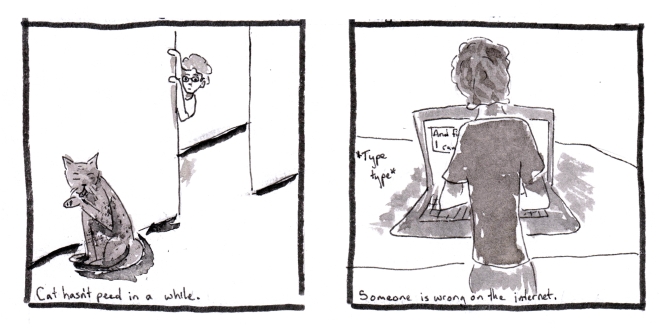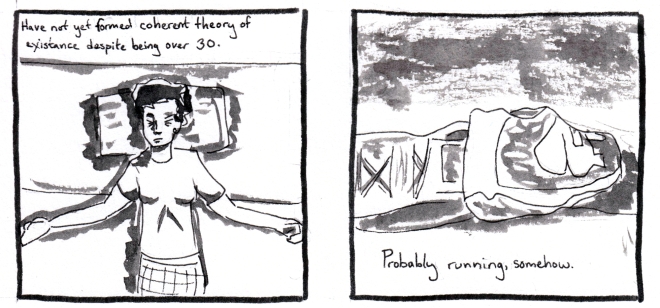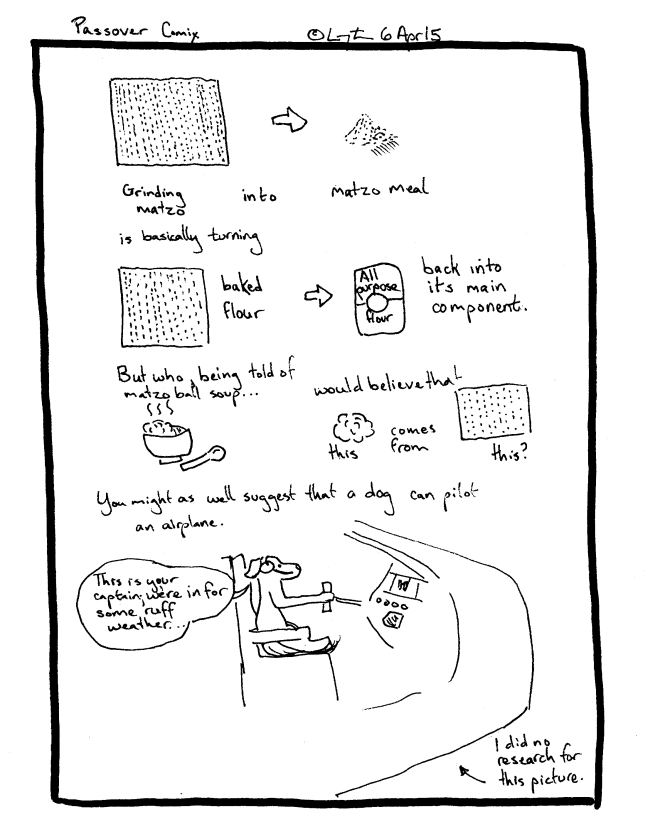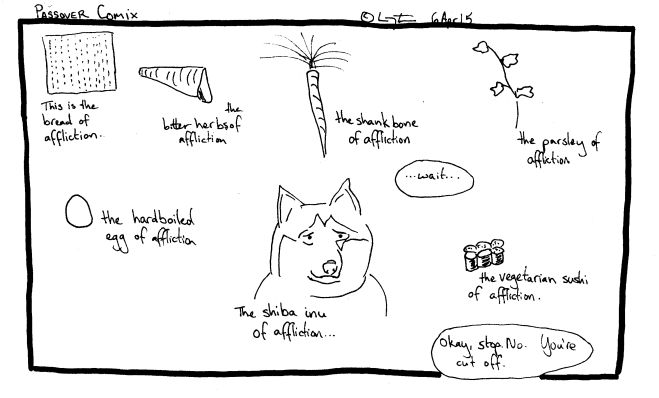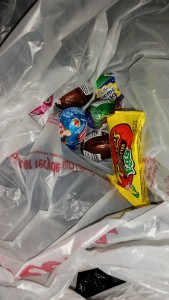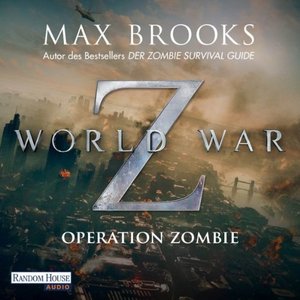This marathon, you guys. I don’t know what to say about it. It has been a tough couple of weeks for me. And so . . . this is my blog, let’s talk about it.
Training
My training for this race was pretty consistent. I logged 208 miles in June, 221.5 miles in July, 253.8 miles in August, and 229.4 miles in September. My longest run was 23.5 miles, which was our running group’s trek out along the planet path from the Monona Terrace to Mount Horeb. That run happened August 29, and it was basically my last long run of the training session. I had an 18-mile run toward the beginning of August too, and a bunch of runs in the 15–16 mile range. There were some weekends where I meant to do 15/15 or 13/13 across Saturday/Sunday, and typically the second day’s run was not as long as planned. But then again, there were a lot of weeks where I took a random day off on a Tuesday or Wednesday to deal with aches and pains preemptively and then ran on Friday, so my legs typically weren’t as fresh going into the weekend as they might have been.
I also did some speedwork for this race. I did mostly 800s (working up to 10 x 800), 400s, or in the last two weeks, strides (15-second sprints with about 45–60 seconds of recovery). These were always as part of a run with warmup and cooldown on normal terrain, not on a track. My pace on these was usually around 8:00 min/mile plus or minus; in fact, the goal for each run was to do the intervals (not the strides) at 85% to 90% of max HR. I made this decision based on the strategies suggested by Pete Pfitzinger and Scott Douglas in Road Racing for Serious Runners. The book is more geared toward races up to the half marathon distance, but I do so little speedwork that it seemed like a good (and unintimidating) starting point. Eighty-five percent of max HR or 8:00 min/mi works out to be about a 5K race pace, which is slow enough that I’m not (or don’t seem to be) in danger of injuring myself doing it.
Finally, my running group was doing our long runs at close to race pace, often in the 8:50–9:20 min/mi range, which basically turned my long run into a long tempo run every week. This was quite helpful; I started out this training cycle just after the 50K feeling like a 9:20 was very fast, and finished able to do a half marathon distance run at an 8:48 min/mi pace, which required some pushing but felt generally comfortable. As a result, I decided my goal for the race—contingent on having a good taper—was going to be 3:55:xx.
Marathon Week
So on the 26th of September, I tested for 4th kyu in aikido. The last weeks prior to the test were for me filled with a lot of aikido classes, so I was feeling a bit bruised by the end of it and ready to taper. Then, on the 28th, Bryan had knee surgery.
The Knee Surgery Thing
Back in the spring, B had his knee scoped. I think the technical term is a knee arthroscopy. The idea was to get a good look at a small defect on the femoral articular cartilage that has prevented him from running for, at that point, a bit over a year. At the time, the ortho shaved down the edges of the defect, and B decided to see how it went. But after rehabbing it, he found that while he could do short sprints during a game of ultimate, he couldn’t really run farther than about a mile and a half with me (on grass-covered trails, specifically) without pain. And then a day came when he went to frisbee and ran too much and the pain didn’t stop for over a week. So he got put on the list for a cartilage transplant.
The thing about being on the list, besides the awesomeness of medical technology that this is an option and the creepiness of having someone else’s cells in your body, is that you don’t know when exactly they’re going to call and tell you it’s time to rock and roll. So B got the call two weeks before my marathon, and possibly because of the aikido test (plus a play we were going to that weekend), he scheduled the surgery they told him Monday the 28th was go day. I’m glad he was able to come to my test, which meant a lot to me, and able to enjoy the play, which would have been difficult if he’d had to try to manage APT on crutches. But it did leave us a rather slender window for him to recover enough for a four-hour car ride.
After the first surgery last spring, he was back on his feet almost right away. Not an exaggeration: We went out to dinner that evening, and I had to glare at him to get him to bring the crutches into the restaurant. The surgery itself was very non-invasive, and they encouraged him to get back to walking as soon as he could. The second surgery ended with a four or five inch incision down the front of his knee, and he’s now on crutches with orders not to put any weight on the affected limb for the first three weeks, with another three weeks of gradual buildup to follow. So not only was his mobility a good bit different, his pain levels were as well; after the first operation, I think he took a few Tylenol, whereas after the nerve block for this one wore off, he needed serious painkillers. And then he developed some other side effects that I’m not going to get into, but suffice it to say that it was kind of an unpleasant week for him.
The thing about the running industry, such as it is and such as I interact with it, is that it is always telling people they have to make running a priority. Going out for a jog, being fit—if you want those things, you have to prioritize them. But the thing is, running is not really a priority for me in that sense. Running is a thing I do in order to stay sane and manage my stress levels, just like brushing my teeth is a thing I do because I have a horrible fear of my teeth falling out like in Tommyknockers to maintain dental hygiene. Race preparation, on the other hand, is something I have to prioritize or it doesn’t really happen.
Over the course of the week, watching B’s health/comfort levels wax and wane, it became clear to me that there was a serious question about whether or not he was going to be able to make the drive up. And I wasn’t ready to leave him to anyone else’s machinations; either we went together or I wasn’t going.[1] So it may be obvious here what I’m pointing at—my taper did not really happen, or not very well.
The Personal Becomes Political
Monday was also when the race organizers sent out an email informing us runners that a protest by the group Black Lives Matter was being planned to disrupt the race at mile 25. Apparently they (BLM) had first announced their plans on the 26th or so, but I wasn’t following the issue then.
At first, I was quite disappointed. After a really long, stressful summer, I had been really looking forward to going up to see my brother and his wife, hanging out, doing the race . . . it sort of belatedly dawned on me that this was a very privileged way to look at things—they’re ruining my relaxing vacation, my race, and so on, when what they’re asking for—justice for police brutality—is both an extremely reasonable thing to request and something that it’s unlikely I’ll ever have to deal with. Which is to say, anyone in the BLM crowd would also like a relaxing vacation weekend, but they weren’t going to get it.
By, I guess, late Wednesday, I was reconciled to the fact that I would run twenty-five miles to where the protest was, symbolically turn off the course, and then jog back to my brother’s house about a block away. And then do, you know, another 1.2 miles on my own. But I wouldn’t be officially finishing. (I came to this decision in part because of discussions with a number of very smart friends and in part because I read some of the comments on the marathon’s Facebook page and realized which side of the issue I thought I wanted to be on. But also, to be honest, the whole thing also felt kind of secondary to the rest of the stuff that was going on in my life, like something I was watching from a distance.)
Thursday, the city of St. Paul and the marathon people announced that a deal had been struck and the race would not be obstructed. Instead, the protesters would be given 1) a meeting with the mayor, and 2) a place near the finish to hold their protest.
Kickoff
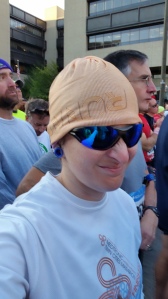
So, spoiler alert, B was able to make the drive up. Friday afternoon and all of Saturday were spent in Daniel and Claire’s most entertaining company, doing things like drinking Pimm’s and grapefruit soda, eating curry, and watching episodes of Sherlock. Then, Sunday morning, we got up early for the race.
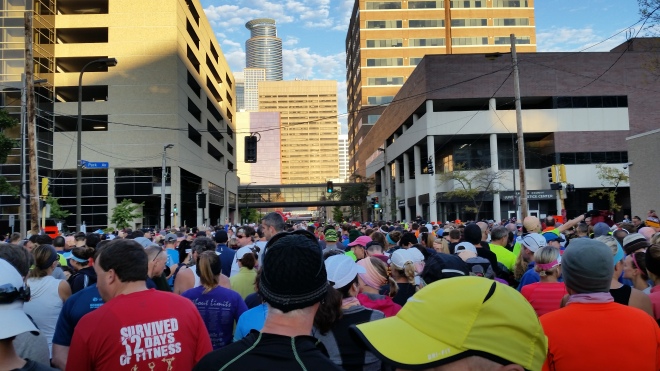
Well, the race was at 8:00; I got up at 5:00 because B got up at 5 to take some pain meds. So it goes. Daniel and Claire kindly dropped me off at a few blocks from the starting line around 7:40, just enough time for a quick warm up and a stop at the port-o-potty. Actually, the PoP I found was right where a bunch of the pros were lining up, so I got to pee within ten feet of the person who actually won the marathon.[2]
The beginning of the marathon was a bit of a problem. The race typically hosts about 8,500 people or so, and we were divided up into four corrals. However, as I jogged along the sidewalk, I could see pacer signs but no indication of where each corral started. I also noticed that the numbers of the runners in the corral I was passing (corral 1) were a different color than mine, which made me anxious that I’d accidentally stumbled into the 10-miler starting area instead.[3] Eventually I ducked in and a woman in a bright yellow vest told me to move back to the 2nd corral (where I was assigned to start).
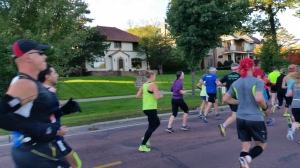
I had jogged about 0.27 miles at this point. For some reason, I decided to just hit lap on my watch rather than clearing it. This had a few unintended consequences. First, during the first mile plus, there were a lot of tall buildings that messed up the distance tracking of my watch; since the time was also off, I couldn’t rely on that to estimate my pace. Second, I didn’t realize that the corrals were going to be released as waves, with several minutes between each. So not only was my watch off from the time on the mile marker clocks by an unknown amount, our wave time was also. Basically, I was pretty lost.
The route starts out downhill for the first mile, then turns up as you run past the Walker art museum (a beautiful building; I’d love to see the collection there sometime) at mile 2. The best sign spotted during this section said “Keep running! . . . Unless you’re Donald Trump!” Then it’s on to circle three lakes, Lake of the Isles, Lake Calhoun, and Lake Harriet from around the 5K mark. This part of the race is great—the houses ringing each lake are easily some of the priciest properties in the city, and there was a good crowd out to watch and cheer us on, too (and all of their dogs).[4] I felt very strong and relaxed through this section, and I was making pretty good time, clocking low 9s and even some high 8s (8:58, 8:46, 8:48). I came through the 5K in 28:xx and the 10K in 56:xx. Around mile 8, we left the first three lakes and entered a long, fairly flat part that went beneath some underpasses and eventually left us near Lake Nokomis around mile 11. I had originally thought I was going to see Daniel and Claire during this part of the race, so I stayed occupied looking for them in the crowds. Later I found out that they missed me in several places by only a few minutes. Crumbs.

I came through the half marathon point in what I thought, after considerable mental calculation, was about 1:58:xx. I was still moving well, and I knew if I could do the second half in that amount of time, I would wind up very close to my goal. At this point, I decided that I was going to take it easy until I reached Summit Avenue, and then really hammer it home on the last 10K. Just really leave it out on the course.
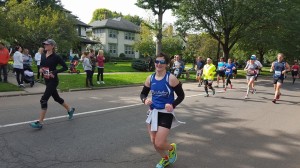
Of course, there were some complications. Aren’t there always? Somewhere around mile 17, my left knee began to ache. At first I thought it might be my IT band, since jogging with Daniel the day before he’d mentioned his own ITB issues. I slowed considerably because of the pain, and the four hour pace group was suddenly right behind me. I managed to gap them briefly, only to be caught when I stopped to stretch. I told myself I’d catch them back up, but I didn’t see them again for the rest of the race. Of course, the problem wasn’t my ITB—it was my hip.[5] So there wasn’t really anything I could do. I tried to just relax and enjoy the day, since I quickly came to the realization that my goal time was not going to be met. At one point, I saw a lady with an orange tabby cat on a leash. The cat was lying in the grass, looking pretty chilled out, all things considered. I shouted at her, “That’s a funny-looking dog.” She seemed confused and shouted back, “Thanks?”
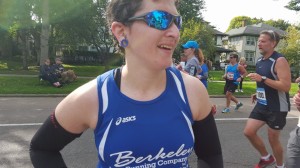
Around mile 19, there was a considerable hill near the University of St. Thomas that I’d forgotten about. At the top of it, a friend from my running group, Julie, was spectating, and she jogged about a block with me. That gave me a big boost. Then I finally got to turn onto Summit, which was kind of a bummer because the first two or three miles are one gradual hill. I don’t remember noticing it last time, but this time it was both obvious and hard. But I got to see Daniel and Claire in there (I think around mile 22), so that was another exciting boost.
Summit Avenue is another really nice section of town with really expensive old houses to gawk at. As I recall from 2008, the stretch between miles 23 and 24 was the longest ever. Although I kept hitting the lap button on my watch when I passed a mile marker, it was never registering a mile when I got to the next one, so everything seemed interminable. I was also having quite a bit of pain in both knees by this point. Then I got to see not just Daniel and Claire at mile 25, but B as well—he’d managed to crutch down to see me hobble by. What a rush!
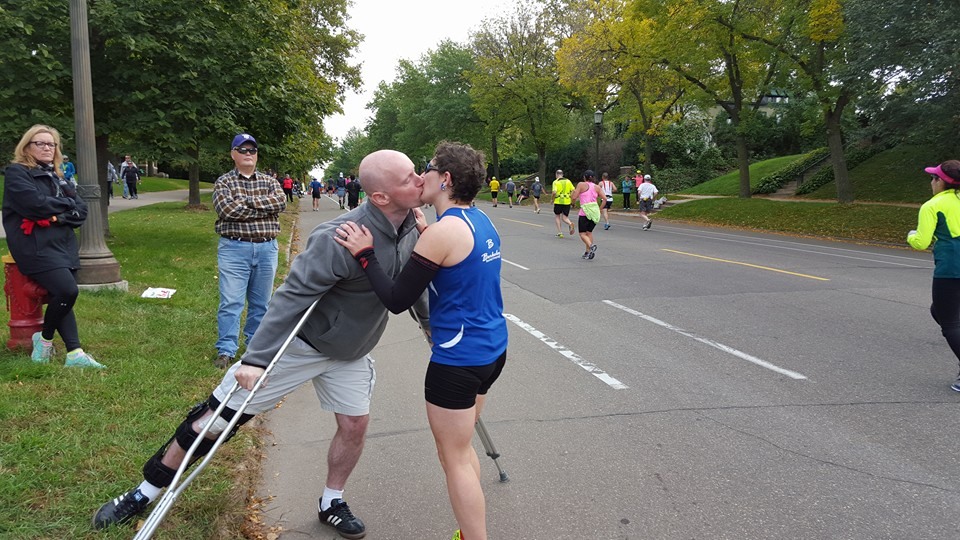
I did reflect, as I left him, that if the protest had gone off as planned, I would be stopping at that point. And, to be honest, I would have been totally okay with stopping. But I was so close.
As I approached the finish line, I remembered the protest again. I had planned to symbolically raise my hands in the “hands up” gesture as I ran past them to express my solidarity for the protesters, since I thought from what I’d heard from the race that it was unlikely they were going to give runners the option to exit the course.[6] But I didn’t actually see the protest. I did see, off to the left behind a chain-link fence, a bunch of people holding signs, but they were mostly white, and also standing in a circle facing inward, so I couldn’t really read any of the signs to determine what group they represented. And I was actually in some not-inconsiderable pain and very focused on just getting through to the finish line, so I decided not to stay and look around and just kept going.
I finished in 4:03:36, about eight minutes off my goal time. The first time I ran the TCM, in 2008, I finished in 4:41:10, so I’ve made considerable improvements in the last seven years. I’m not quite where I want to be/think I should be, but I’m somewhere other than where I started. And that’s sort of the idea, I guess.
The Aftermath
As I mentioned, I crossed the finish line with pain in both knees. Fortunately, there was no permanent damage. With B’s help, the joint got shifted back to its proper position, and I am now again pain-free. I have already been out and run a few times this week, with no noticeable problems other than my quads being tired. I also felt pretty beat up generally at the finish; I think I have done so many trail races lately that I had kind of forgotten how running so far on concrete makes you feel like you’ve been beaten. My next two races are on a combination of cement and gravel, so we’ll see how that affects me.
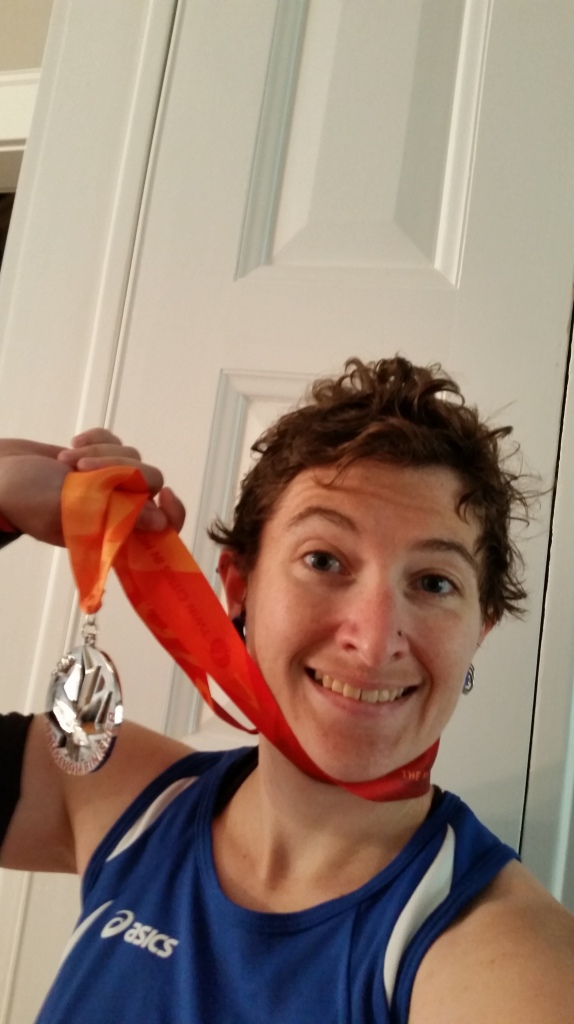
I also finished with some pretty bad chafing on my back—it seems the belt I was carrying my phone in bounced around a lot, to the point where I had several kind of ugly, bloody scrapes on the small of my back. Those are still healing—yesterday at aikido, I noticed the top piece of my hakama occasionally digging into them when I fell. Ow.
Other than those, life has been pretty decent. And B’s recovery has been going pretty well.
When I told the story of this race to a friend, she asked why I didn’t just stop when things started to hurt. I don’t really have a good answer. I guess I just didn’t feel like anything was bad enough to warrant stopping, so I didn’t. What kind of what would warrant stopping? I don’t know the answer to that either. I do know that I have one more big race (ultra) and a half scheduled for this year, and possibly a 5K or 10K on Thanksgiving, and then I’m going to take it a little easy for a while. Easy meaning nothing longer than a half, maybe doing some weird trail race distances that are, you know, 15K or whatever. Maybe doing some more swimming. I feel like I say that a lot after marathons. I guess time will tell if I actually mean it.
[1] Not to sound too noble. I was going to run 26.2 miles on Sunday regardless of where I was, but if I was at home, I was planning to do 5 x 5 mile loops with a break for an ice cream sandwich after each.
[2] Okay, that was one of the weirder sentences I’ve written.
[3] I found out later that the 10-mile race had already been won by the time we set out. The winner finished in about 56:xx. Holy cow.
[4] Best dog: a husky who, when he heard the crowd shout “Woo!,” started howling. Also spotted a small bear-like beasty (possibly a chow puppy) being held and bounced like a baby by its owner.
[5] My SI joint slips, and then one of my legs becomes longer than the other, putting pressure on my knees. I’ve started doing more plank/dead bugs/half bridges to try to prevent it, but it still happens.
[6] So for liability reasons, races don’t want you leaving the course without telling anyone. There have been cases of runners getting eaten by bears and so forth—of course, an unlikely outcome in a big city marathon, but still.

